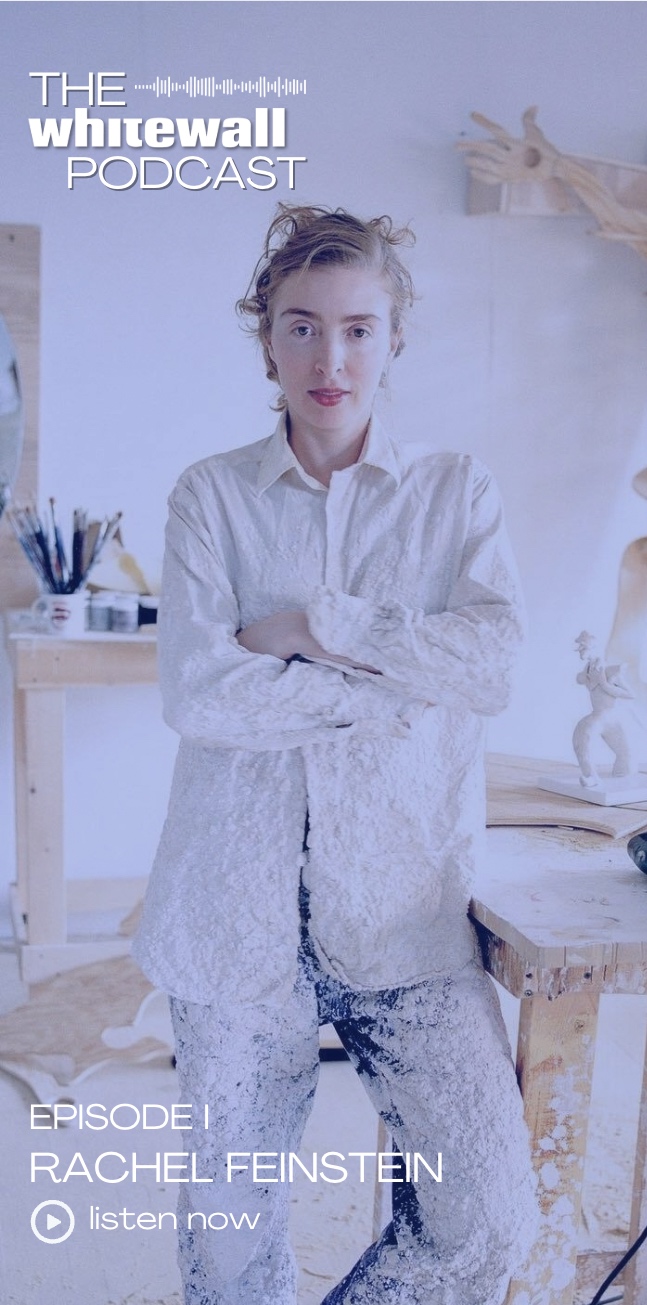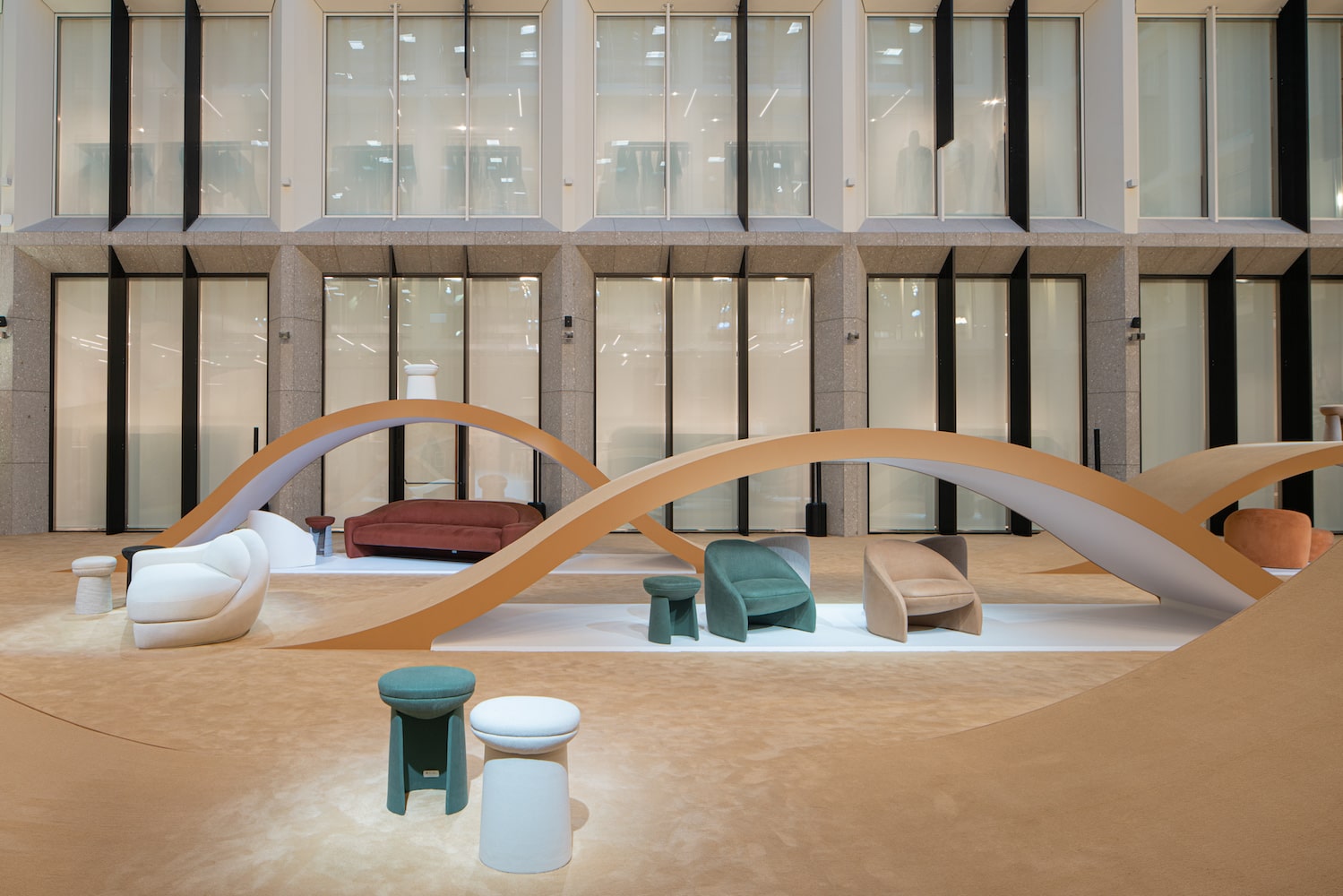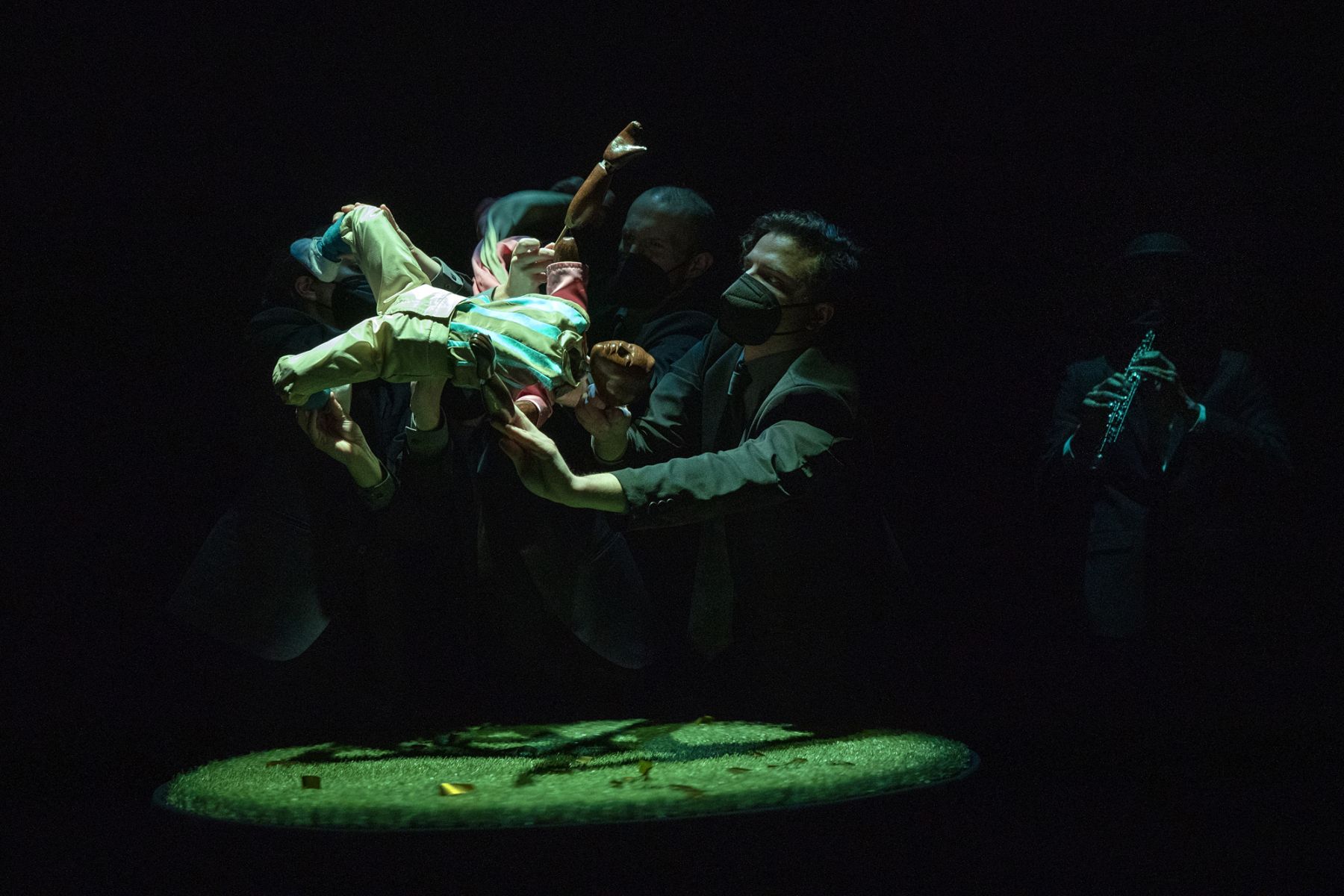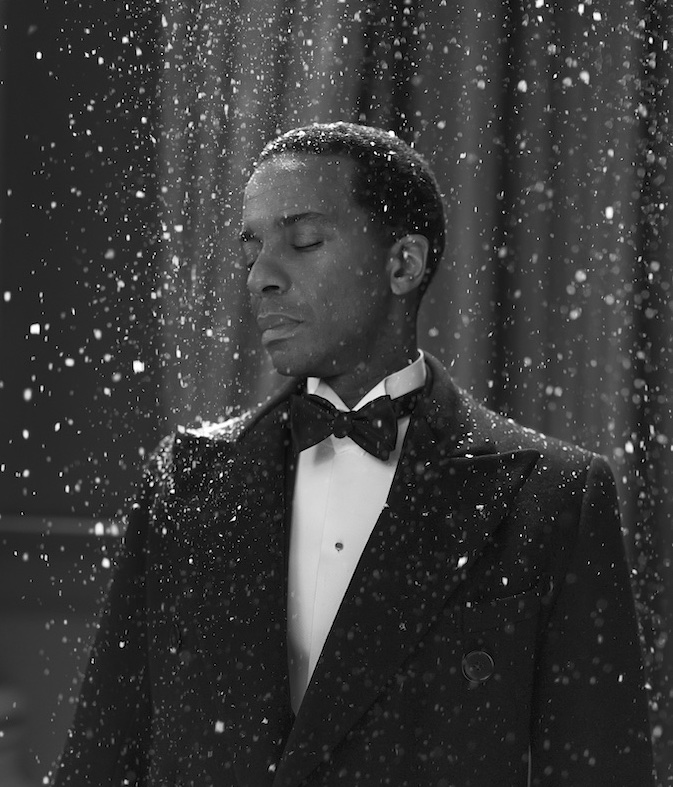Two decades after launching his eponymous interior architecture and design practice, Pierre Yovanovitch debuted a collection of furniture and lighting that channels his affinity for Japanese, Scandinavian, and American design and his roots in Provence, France. His designs embrace natural and sturdy materials with playful forms and names he attributes to the adventurous and jovial environment in which he grew up. Whether in meeting the needs of private clients or collaborating with brands like Dior Maison, he likes to create what he calls “beauty marks”—the moments that make something totally unique.
Yovanovitch’s interest in art is central to his work and life. He is both a collector of art and collaborator with artists, eagerly pursuing the chance to immerse himself in their minds and freedom. His breathtaking Château de Fabrègues has become a playground for site-specific commissions, boasting frescoes by Claire Tabouret (in the estate’s chapel) and Matthieu Cossé. He sees the intersection of contemporary art and design as integral not just to the success of an interior space, but to his practice.
Whitewall visited Yovanovitch at his stunning studio in Paris to learn more about finding that oh-so-charming balance of quality and quirk.
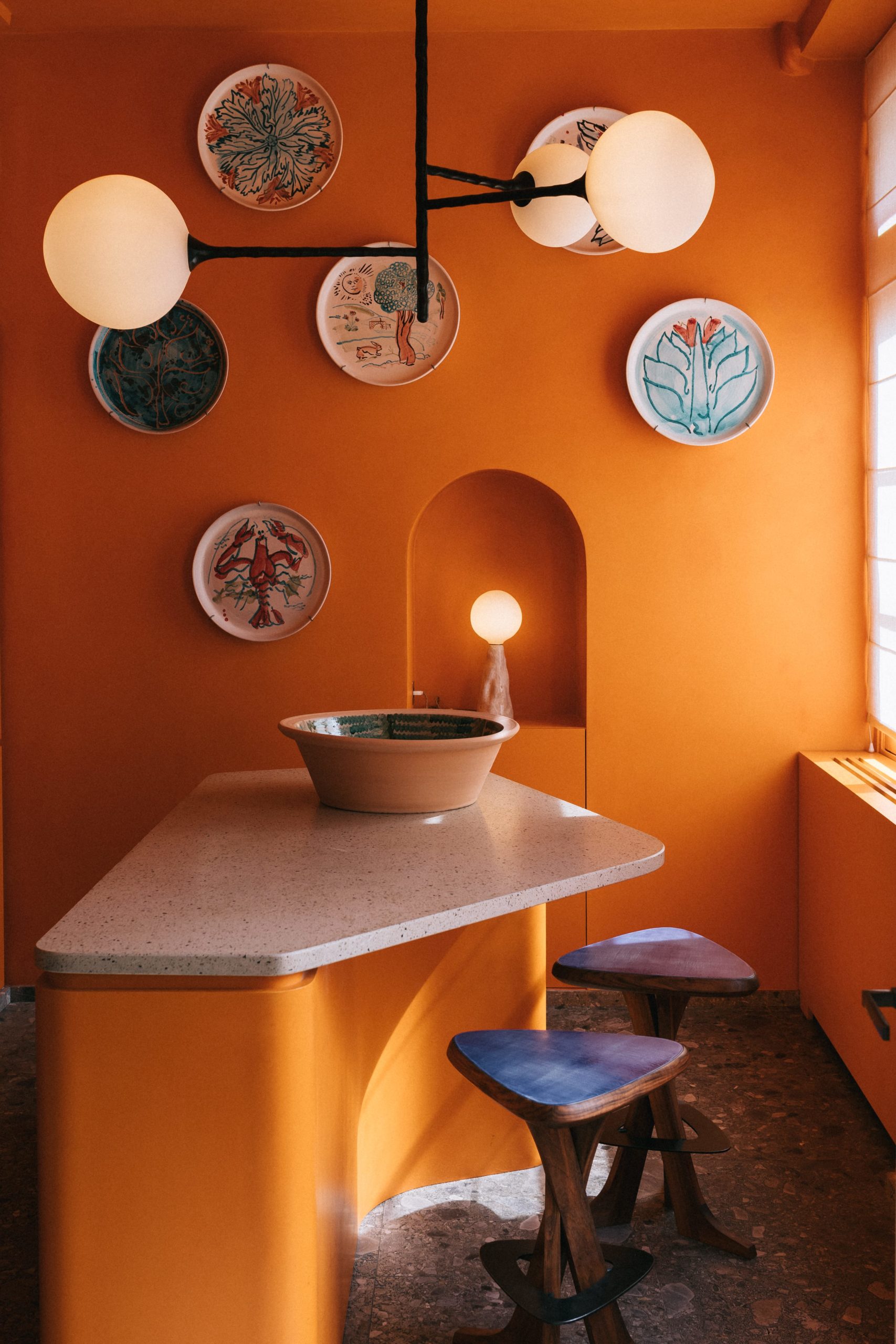 Pierre Yovanovitch’s design atelier in Paris, photo by Karl Hab.
Pierre Yovanovitch’s design atelier in Paris, photo by Karl Hab.
WHITEWALL: Your collection of furniture and lighting, Pierre Yovanovitch Mobilier, is inspired by your Provençal roots. How so?
PIERRE YOVANOVITCH: The pieces draw from my connection to Provence in a number of ways. The variation of materiality there, whether it’s the vivaciousness of the lavender fields or the dense, unwieldy forests in the region, is a contrast I often pay homage to in my work. For our MAD armchair, for example, we see this unification of diverse materials with the inviting, yet strong, upholstery and sturdy, hand-carved solid oak frame. There is also a sense of imagination and jovialness that comes with having grown up in the south. The opportunities to explore the different types of nature in the region, whether it be the countryside or the beach, brought endless opportunities for adventure. I like to bring that excitement and lightheartedness into the design of my pieces.
WW: You combine your appreciation for craftsmanship and materiality in these pieces, which are quite playful—we’re thinking of your Lovebirds table, Oops chairs, or Mama Bear chairs. How can you play with shape, volume, lines, and materials to share a sense of not just beauty and comfort, but also joy?
PY: I try not to take myself too seriously, and to move away from conventional norms. Most of all, I need a sense of freedom and movement, which to me are two essential components of joy. Also, as you say, I use unexpected design elements or exaggerated forms. For the Flirting (highback) armchair, for example, we wanted to create a classic armchair, but I really loved the idea of creating an exaggeratingly long chair back to add some character to the piece. With the Lovebirds table we have this ceramic insert in the center of the table, which is a reference to vintage tables with a hot plate surface in the center, but a much more elevated version of this. These surprising elements are what make the pieces stand apart.
WW: How do you translate an appreciation for natural materials into a sustainable process in your practice?
PY: Our sustainability efforts center around our use of raw materials obtained from natural sources, making it possible to create long-lasting works. These materials are sourced with consideration of their footprint and their exceptional quality. We use only the highest quality local woods such as oak, walnut, or larch. We also mostly use natural fibers (wool, cotton, silk, linen, hemp, and mohair) as well as the best standards in solvents where necessary, though the use of adhesives is kept to a minimum to enhance the piece’s durability over time.
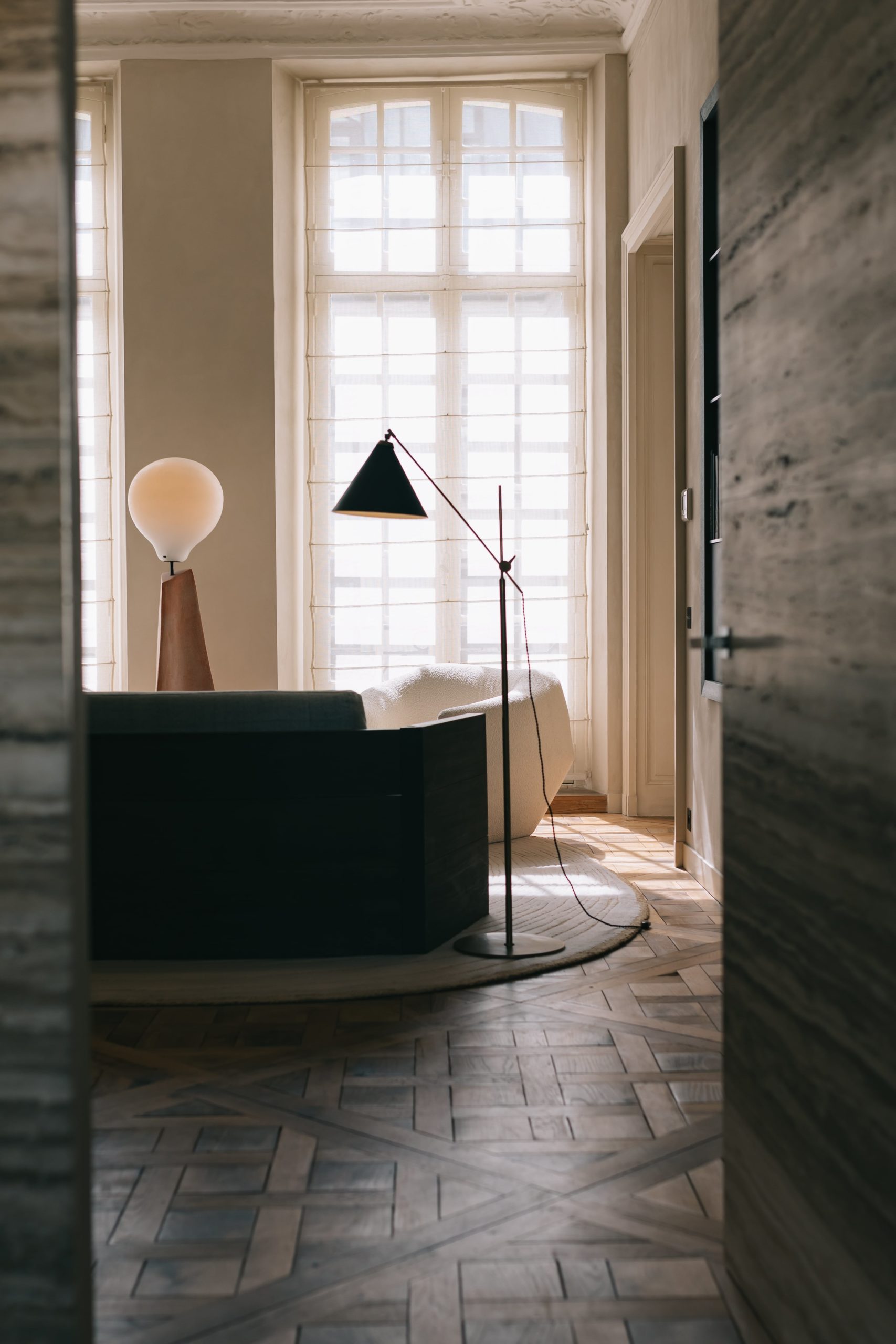 Pierre Yovanovitch’s design atelier in Paris, photo by Karl Hab.
Pierre Yovanovitch’s design atelier in Paris, photo by Karl Hab.
WW: At the heart of your practice is your passion for contemporary art. As a collector, you often work with artists to commission site-specific pieces. How did that first come about?
PY: I love art, as I believe it elevates the mind and way of being. As a creative, I love to immerse myself in the mind of the artist. Ever since I acquired Château de Fabrègues, I knew I wanted to use it as a sort of platform for site-specific artworks. Over the years, I’ve had the honor of hosting many artists who have since become close friends. They’ll often stay for many days on end while they take in the surroundings and use them as inspiration for their work.
WW: What do you enjoy about collaborating with artists on specific projects?
PY: It’s really an exciting creative exercise for me and an opportunity to bring something truly unique and special to my interiors projects. Bringing art pieces into our interiors projects is what really informs the space and adds so much dimension and character to a room. Being able to work with artists on a site-specific piece really takes this to another level as the art becomes a reflection on the space and on the story of its inhabitants. In addition, the riskier nature of site-specific art contributes to its impact.
WW: You’ve said there’s a freedom that artists have that architects and designers don’t. What do you enjoy about witnessing that freedom? How does it enrich/inspire your own practice?
PY: The artist’s work is an expression of themselves. In my architectural and interior work, I take pride in expressing, albeit in my own style, the story of the place and of its owners. The point of view is entirely different. With furniture, there is a lot of creativity, but at the end of the day, the works need to hold their functional value and be something people want to sit in, lie on, and live with. With site-specific art, the difference tends to blur a little, however—owners are often more sensitive to the freedom of the artist than to the freedom of the interior architect, understandably so. Obviously, working with artists and witnessing their freedom has enriched me. I would not say it has transformed my relationship to my work. I remain an interior architect and designer. However, it has profoundly changed my work itself, most notably in my use of colors, materials, and textures, but also my use of shapes and asymmetry—let us say that I have become a little more fluid.
WW: Your Château de Fabrègues is breathtaking. What made you fall in love with this location, and what kind of feeling did you want to create inside and out?
PY: There is a very special ambience in Fabrègues. It is a self-contained natural environment that really feels secluded from the outside world. I can express myself there with very little interference. Also, there is a harshness about the place—very cold nights, dry spells, and rocky terrain—that I particularly like. You are right about falling in love. This is exactly what happened.
WW: You worked with Claire Tabouret to create an incredible fresco in the chapel. Can you tell us about working on that and your relationship with the artist?
PY: Claire and I have been good friends for many years now. We met at a dinner party where we became fast friends. I invited her to stay at Fabrègues and create an immersive fresco in the old chapel on the grounds. I wanted a special place to reflect and meditate. Claire told me she wanted to do something with children; I agreed and she started to work with almost no interference from me. She did, however, know me well and probably created the piece with me in mind.
WW: Matthieu Cossé has also created beautiful frescoes on-site, too. Can you tell us about those and that process as well?
PY: Yes, Matthieu recently worked in Fabrègues and on several of my other projects. Matthieu’s source of inspiration is nature—he looks at nature a lot and uses a range of techniques to represent it. With Matthieu, there is a process: He prepares a series of sketches, and we refine his ideas together. He then prepares a study or two of the project, and again we work together to refine it. There is a storytelling aspect in his work that I enjoy immensely.
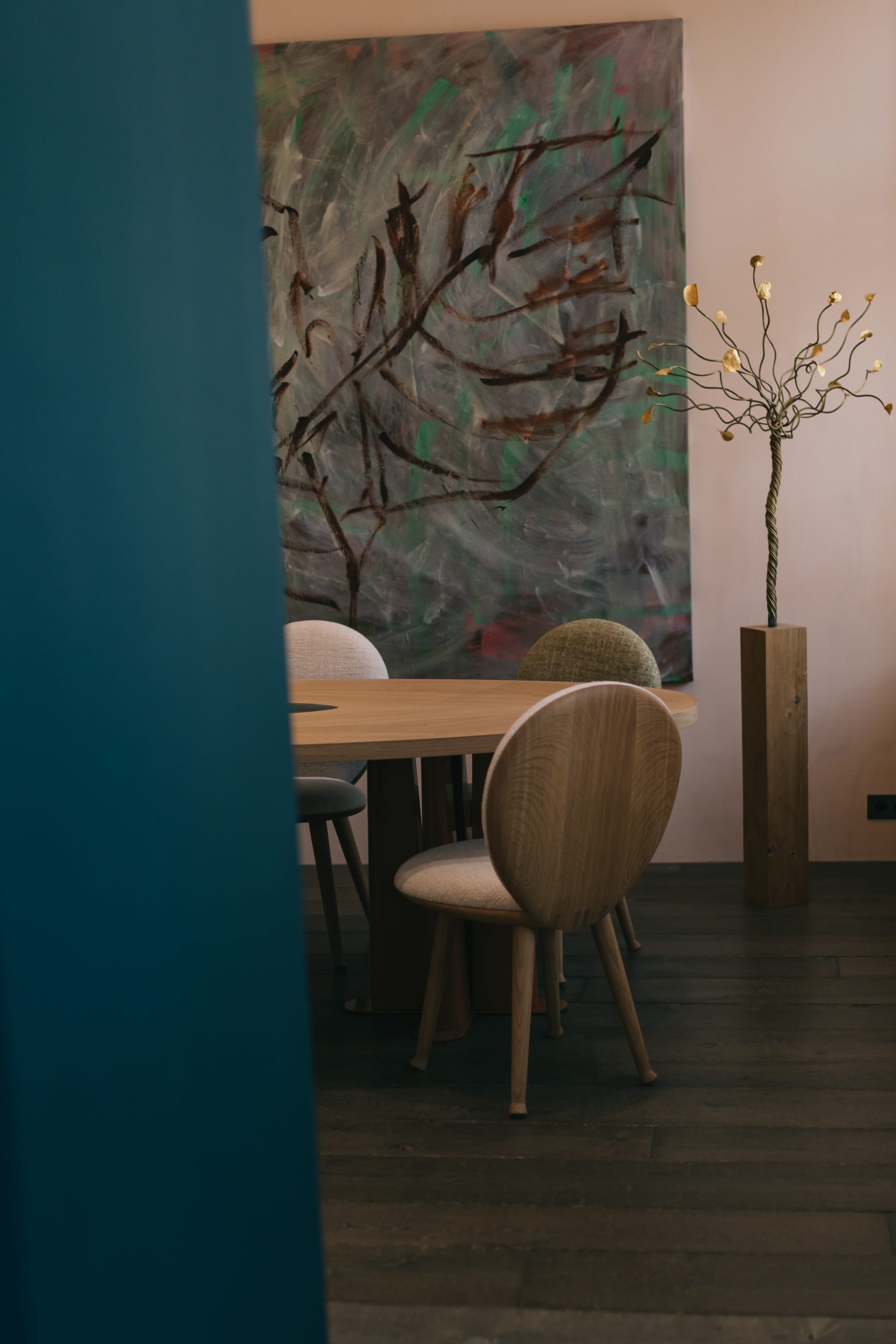 Pierre Yovanovitch’s design atelier in Paris, photo by Karl Hab.
Pierre Yovanovitch’s design atelier in Paris, photo by Karl Hab.
WW: How has Château de Fabrègues become a site for artistic commissions, and perhaps your own experimentation and freedom creatively?
PY: Among many things, my home is a source of creative freedom for me. While my client work is always engaging, there is something so liberating about being able to have carte blanche with a space creatively. Bringing artists into my home to create site-specific pieces has been such a joy, both in that it’s a way for me to collaborate with these artists but also because my home presents endless opportunities for creativity.
WW: You recently curated “Un printemps rue Beauregard” with Kamel Mennour in Paris. Can you tell us about that exhibition and what it was like to curate it?
PY: Yes, I’ve worked with Kamel Mennour in various capacities for many years now, having designed three of his gallery spaces. We came up with this idea of creating a special showcase of artworks and design pieces from my own brand in our Pierre Yovanovitch Mobilier showroom space in Paris. We opened the show up to the world by offering it as a virtual viewing room. This intersection between contemporary art and design is so integral to my practice—this was a great way to be able to open up this dialogue to the wider public.
WW: You’ve cited opera as another inspiration, outside of contemporary art. What was it like, then, to design the scenography for Rigoletto at Le Bazar de l’Opera? Is it something you’d like to do again?
PY: It’s a lifelong dream come true for me! As an avid supporter of the opera, I love how the set design sets the tone and feel of a show. I also talk a lot about the storyline behind the design of my furniture pieces and my interiors projects, so in some ways creating the actual scenography for the opera is a perfect reflection of how I approach design in general.
WW: You’ve also said that you like to create incidents. How do you create those? How do they help to tell a story or create a mood in a space?
PY: When you work with natural materials, and in a variety of different types of geographical settings, it’s important to remain flexible and allow for “naturally occurring variations” in projects. When they occur, I try to view them as beauty marks in some ways—characteristics that make a project truly one of a kind. I think this creates a tone of originality in my work and is something I welcome in all of my undertakings.
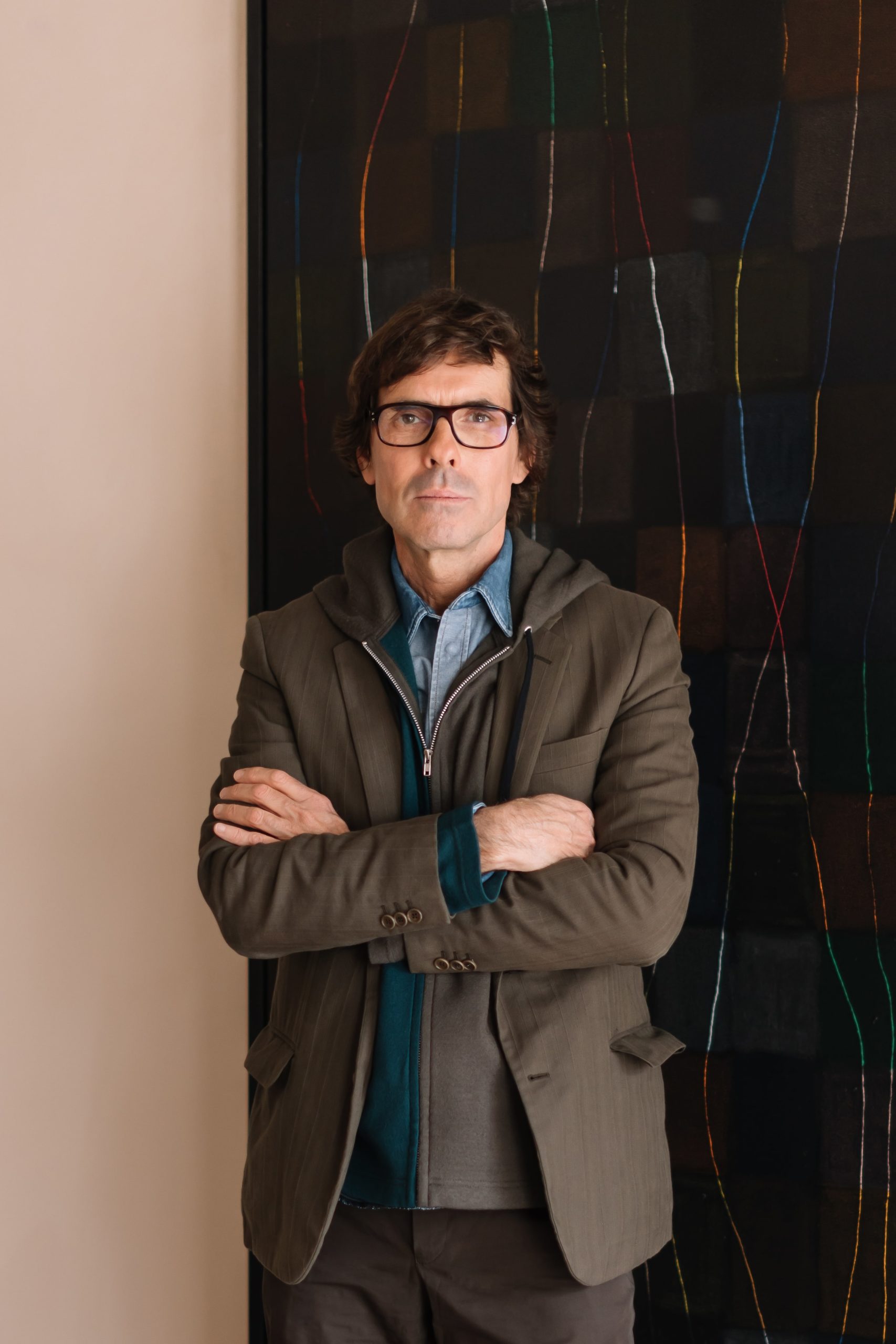 Portrait of Pierre Yovanovitch by Karl Hab.
Portrait of Pierre Yovanovitch by Karl Hab.








